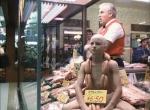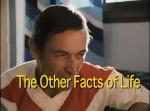AustLit
Latest Issues
AbstractHistoryArchive Description
Twelve-year-old Ben Guthrie appears to have a good life. His family are well off and his father is a successful and ambitious butcher. However, there are some things that Ben doesn't understand. His father attempts to explain the facts of life, but Ben is more interested in the bigger life picture, such as why some people are starving. When both his parents fail to provide answers, Ben begins an inspired crusade to make the world right. He becomes a neighbourhood nuisance and an embarrassment to his family, constantly and publicly challenging their values. His parents seek the help of friends and experts, to no avail. When Ben meets Esme, an elderly animal liberationist, and they end up in the hands of the police, his parents resort to faking family illnesses to distract Ben from the larger troubles of the world. But it is not until his work-obsessed father suffers a genuine heart attack that Ben is able to focus his energies on a problem he can do something about: helping his family.
(Source: Australian Screen)
Adaptations
-
y
 The Other Facts of Life
Fitzroy
Ringwood
:
McPhee Gribble
Penguin
Australian Children's Television Foundation
,
1985
Z350049
1985
single work
novel
young adult
The Other Facts of Life
Fitzroy
Ringwood
:
McPhee Gribble
Penguin
Australian Children's Television Foundation
,
1985
Z350049
1985
single work
novel
young adult
'Ben stared at the images on the TV screen half in fascination, half in horror. He had never seen anything like this. It was incredible. It was awful. He needed answers . . .
There are some things Ben doesn't understand, so his dad is sent in to explain the facts of life. But it's the other facts that are worrying Ben and he decides to find his own answers. He's deadly serious - and the results are very, very funny.
'The story of one boy's stand for a better world and a slightly better family.'Source: Publisher's blurb.
Notes
-
Telemovie.
-
This film was the beginning of Esben Storm's long involvement with the Australian Children's Television Foundation.
-
The trailer for this film is available to view via YouTube: http://www.youtube.com/watch?v=139ikstxcLE
Publication Details of Only Known VersionEarliest 2 Known Versions of
Awards
- 1985 winner AWGIE Awards — Children's Award — Best Original Film Script




